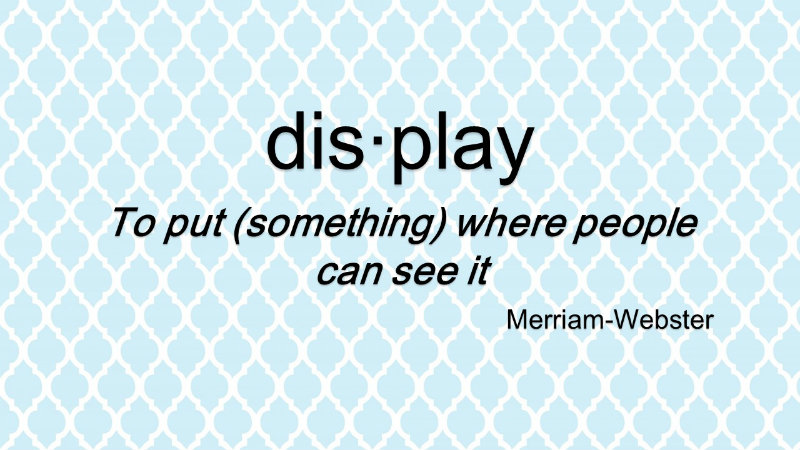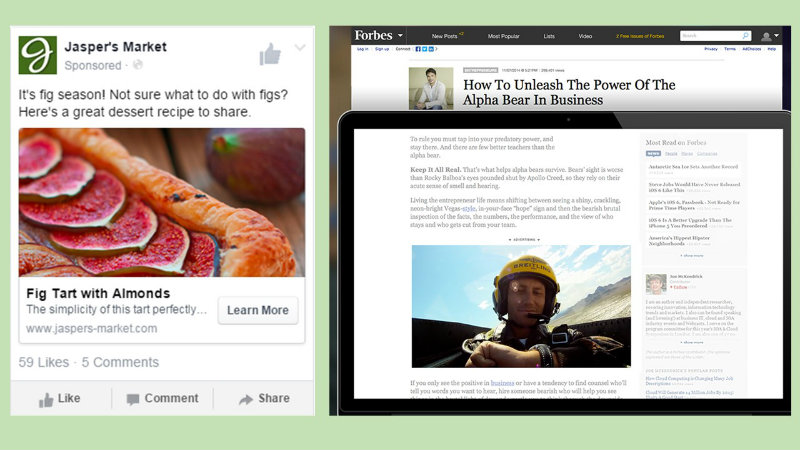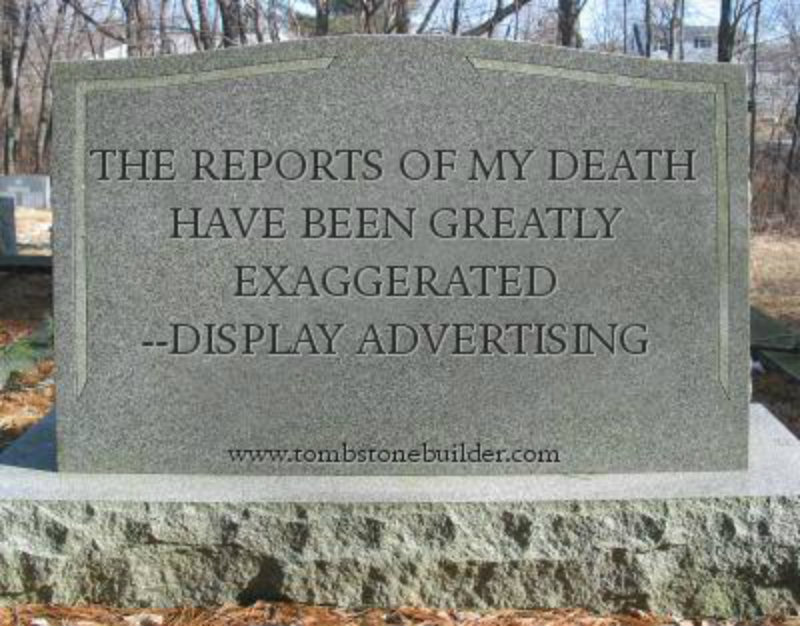5 Reasons Why Display Advertising Will Never Die
If you think display is dead, think again. Columnist Peter Minnium outlines five reasons that digital display advertising will likely outlive us all.
“Display is dead,” glibly chirped the very senior agency executive at a recent meeting of six dozen impressively pedigreed brand marketers and agency leaders. I was a guest at the confab — and this was a good thing; if it were my meeting, I would have verbally boxed this digital “guru” in the ears.
You see, I have reached my wits’ end. I am sick and tired of folks who profess to be digital experts declaring the death of display advertising — in the face of overwhelming evidence that proves just the opposite.
Not only are they wrong, but their facile decrees slow the industry’s progress toward delivering on the digital advertising promise of transfixing consumers and transforming brands.
There are two reasons why intelligent individuals might take this point of view, neither of them flattering: ignorance or disingenuousness.
Looking first at the latter, what I call disingenuousness, others call good marketing, for it is practiced by a plethora of VC-backed, attention-starved digital advertising startups who must differentiate themselves from and denigrate the pack.
This group blithely quotes declining click-through rates as evidence of the display death spiral, ignoring the fact that few rely solely on this nearly 20-year-old metric. They too myopically define “display” as the leaderboard and medium rectangle banners and ignore the flowering of other types of display advertising revolutionizing the digital advertising market, powered by advances in native, in-feed digital video, mobile, and programmatic creative.
Alas, it is not within the scope of my power or this article to change the narrative of these determined business people. I will instead endeavor a humble attempt to shine light on the truth by providing evidence that display advertising is alive and well — and in fact will likely outlive us all. Here then are the five reasons display advertising will never die.
1. Native And Digital Video Are Revolutionizing Display Advertising
While display advertising includes standard banners like the much-loved and -maligned 300×250 medium rectangle, so too does it include innovative new forms that benefit from advances in native and digital video advertising.
Yes, I am saying that many types of native advertising, including almost all those seen on social platforms, are a form of display advertising. While a sponsored post may not be served in industry-standard sized boxes, it certainly is “put (smack in the middle of the screen) where people can see it.”
This is also true of the new breed of digital video advertising that is presented in a content feed rather than in a video stream. One purveyor has coined the term “out-stream,” which I love, and this new form of formatted display advertising is scaling quite nicely.
2. Mobile Is Fueling Display Advertising Growth
Mobile advertising has grown at a compound annual rate of 110% over the past five years, an astounding pace that has propelled the category to $12.5 billion in 2014. Half of this is mobile search, and the other roughly half is in display advertising.
While the industry got off to a rough start in terms of creative advertising experiences, we are now seeing a flourishing of compelling display formats, from beautiful smartphone and tablet Full Page Flex ads to innovative in-feed forms. And, yes, even the much-maligned 300×250 is seeing a rebirth on the smartphone as a very fine half-page-like ad product.
3. Display Advertising Works
To me, the most persuasive evidence of the efficacy of display advertising is that marketers continue to increase their spending in it.
In 2014, advertisers spent $13.5 billion in display advertising in the U.S., excluding mobile, according to the IAB. This represents a 5% increase from 2013.
Mobile display advertising added an additional $6.4 billion during this period. While not a scientific finding, I feel it is safe to assume that if display were not effective, the planet’s smartest marketers would not be spending nearly $20 billion on it in the U.S.
Taking a more granular view, countless studies have proven that specific forms of display perform, including IAB Risings Stars that drive interaction and brand lift without being seen as intrusive; native display that increases awareness, purchase intent, and post-exposure brand search; and in-feed digital video that outperforms on brand impact and perception metrics.
Today, digital display advertising is working for marketers across the purchase funnel, from increasing awareness, desire, and demand, to enhancing engagement, and ultimately to driving conversions.
4. Formatted Display Advertising Fuels Programmatic Media And Creative
It is a truism in the digital world that “that which can be automated, will be.” Many people often overlook the first half of that phrase and assume that everything will be on auto-pilot in the near future. They do so at their own peril, as enormous obstacles exist to bringing the most innovative forms of digital advertising into the programmatic sphere.
That’s why the dominant forms of exchange inventory today are still the leaderboard and m-rec banners. There is, however, an overwhelming groundswell to expand the pool of available inventory — and this means making it all a form of formatted display.
We have seen incredible advances in programmatic creative of late, building on yesterday’s dynamic creative optimization to deliver personalized creative that responds to the data signals of individual sessions.
This is an enormously complex process, requiring marketers to generate distinct commercial options and brand messages, agencies to create matching content assets, and ad tech to produce, target, render, and serve dynamic creative. This cannot be done without formatted display advertising.
5. We Are Only At The Beginning Of A Display Advertising Renaissance
Advertising in every new medium begins as an awkward accompaniment and, over time, matures and takes on a more natural form, fitting more comfortably within the content.
Early television commercials featured nattily dressed radio announcers reading copy to the camera. It took many years for television advertising to find its natural form of mini 30-second stories within the broader program stories. Similarly, early magazine ads were stacked at the back of the book and only became integrated between stories and reflective of the publications’ look and feel over time.
Digital display advertising is on the cusp of achieving its mature form, moving past its pre-adolescent one characterized by the ubiquitous leaderboard and right rail banners of old. We are witnessing the beginning of a renaissance, powered by advances in native, in-feed digital video, mobile, and programmatic creative.
Next-generation display advertising is already delivering even greater performance for marketers by moving into the reader’s natural activity stream, using sight, sound, motion plus interaction, being reflective of the page content, and offering the user the ability to interact with the ad content in the same manner as content on the other parts of the page.
To paraphrase Mark Twain, I’d say reports of the death of display advertising have been greatly exaggerated.
Opinions expressed in this article are those of the guest author and not necessarily MarTech. Staff authors are listed here.
Related stories




